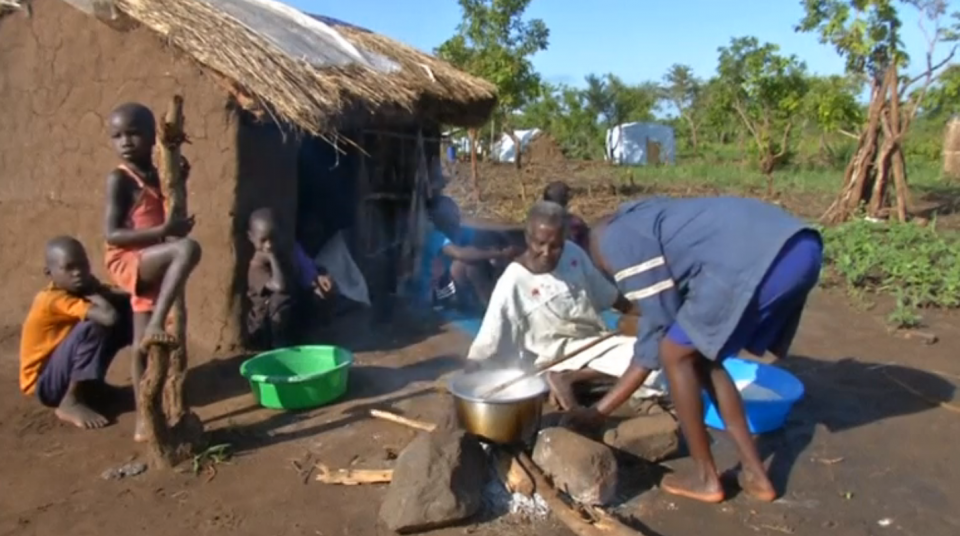
PAGIRINYA, Uganda (Reuters) – When government soldiers came to Pajok, a town in South Sudan close to the Uganda border in April this year, Maria Lalum was caught in crossfire as the soldiers pursued fought rebel forces allied to ousted vice president Riek Machar. She survived by hiding in the forest for five days before crossing into neighboring Uganda.
Lalum, a 72-year-old grandmother says this is the third time she has had to flee the war-torn east African nation and now she sees little hope in South Sudan’s warring leaders, President Salva Kiir, an ethnic Dinka, and his former deputy Riek Machar, a Nuer, ever healing their personal and tribal animosity that has split South Sudan just two years after it became the world’s youngest nation.
Overall, the fighting has uprooted more than 3 million South Sudanese, and by July 5.5 million – nearly half the population – are unlikely to have a reliable food supply, according to the United Nations.
Here in Palabek refugee settlement in northern Uganda, Lalum lives in land previously untouched since the 1990s due to the murderous rampages of Joseph Kony’s Lord’s Resistance Army. The land is now a sprawl of tarpaulin shacks housing hundreds of thousands of South Sudanese fleeing a three-year civil war that has triggered the biggest cross-border exodus in Africa since the 1994 Rwandan genocide.
Villagers in the impoverished border regions have donated land to refugees on the expectation that the foreign donor funds that support the refugees will also help the villages in the form of shared public services such as schools, roads, wells and clinics. A Ugandan law passed in 2006, guaranteeing refugees freedom of movement, employment rights and access to public clinics and schools has made the country a frequent sanctuary for those fleeing nearby conflicts.
Each family is also given a 30m x 30m plot of land on which to build huts, and a larger 100m x 100m plot on which to grow subsistence crops, to make them self-sufficient as quickly as possible. However, the influx of refugees is testing Uganda’s generosity with pundits saying that the system of accommodating refugees, routinely touted as one of the world’s most progressive, is about to burst in its seams.
Ugandan government officials and aid agencies say the large influx has stretched available resources. Refugees say they are getting half of the standard monthly food ration of 12 kg of maize and 4 kg of beans. The United Nations Refugee Agency says it has only secured just 10 percent of the estimated $300 million required for the South Sudanese refugees in Uganda this year, leaving it unable to meet the basic needs of refugees or locals.
The Agency also said the problem is that aid flows are not keeping up with the scale of the exodus from South Sudan – at least 832,000 have arrived in Uganda since fighting erupted in July last year – and the system is tottering, adding that Uganda’s crisis was also competing with other humanitarian disasters in Africa, most notably drought in Somalia and food shortages in northeast Nigeria stemming from Boko Haram’s six-year jihadist insurgency.







